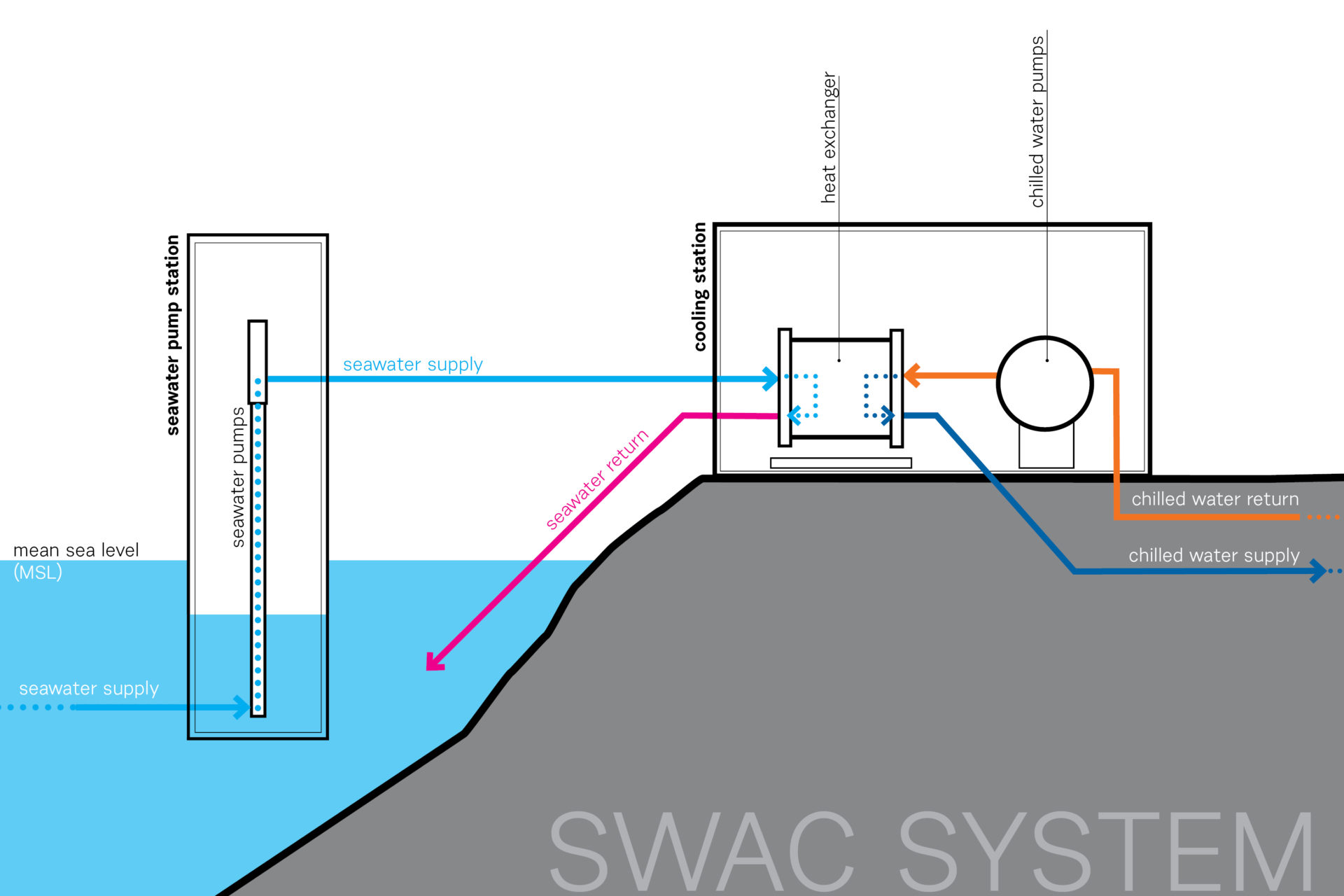The island of Guam generates all of its power using fossil fuels imported from the mainland United States via ship. As a result, the cost of electricity is very high, and every effort to reduce consumption is given careful consideration.
One such effort is the possibility of utilizing deep sea water for air conditioning purposes. NAVFAC commissioned the CH2M Hill/Clark Nexsen Energy Partners and consultant, Hatch-Mott MacDonald (tunneling) to evaluate multiple locations for a central pumping station and associated seabed piping. In the island environment, our team considered key factors including the environmental impact (coral, wildlife, unexploded ordinance), geology (tunneling, stability of land), access to deep water, proximity to the buildings to be served, and wave action in determining the feasibility of SWAC implementation on island.
Our findings confirmed that while there are significant obstacles to overcome, sea water air conditioning is viable as a possible alternative and should be pursued further. Next steps are to further develop the design, more accurately quantify the excavation impacts and costs, and re-evaluate the overall payback and implementation methods.

